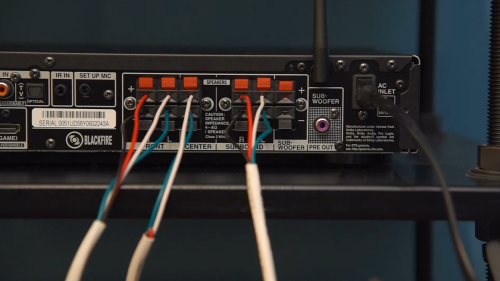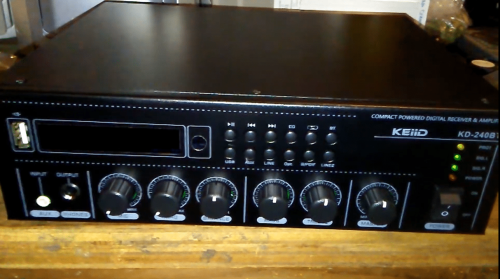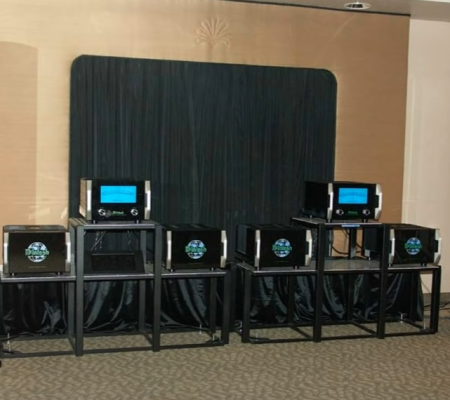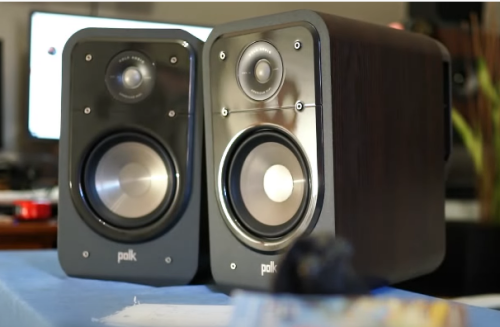Most commonly used speakers are relatively straightforward. However, higher-end speakers can be a little more tricky as they have two to four terminals. To make your setup easier and to avoid any mishap that may cost your speakers, our team will thoroughly explain how to wire speakers with 4 terminals in this guide.
3 Steps on How to Wire Speakers with 4 Terminals
Step 1: Wire Gauge and Length
First, check the wire gauge and length that’s most suited to your speakers so you can get the best sound quality from them.
Wire Length and Gauge
Note that a lower number wire gauge means that the wire is thicker. The thicker the wire, the easier the sound current flows.

In terms of wire length, a relatively shorter wire run about 50 feet or less, will need a 16 gauge wire. However, if you are using longer wire runs, higher power applications, and low-impedance speakers, you should stick to a thicker wire like 12 or 14 gauges.
To find out what length you need, use a piece of string and measure from your amplifier location to your speaker location. That length, plus a few more feet should be how much wire you need to connect all of your audio gear comfortably.
Amplifier
You need to know if your amplifier can also handle the wire you will use. For example, you have an amplifier that uses 100 watts and is made to deliver sound impedance at 8 ohms.
Let’s say you use a thicker wire made for an amplifier that uses 200 watts and delivers 4 ohms [1] of sound impedance. This really won’t make that much of a difference since the amplifier doesn’t have enough power to utilize a thicker kind of wire properly.

At best, with a thinner wire, it will sound the same. At worst, you will try to turn up the power of your amplifier which could damage the equipment. Therefore, stick to the proper wire gauge and length.
Step 2: Strip the Speaker Wire
Once you have the gauge and length out of the way, it’s time to strip the wires. You need to strip both ends of the wire to place them into the bi-wire posts (the four terminals) and connect them to the amplifier. Most speakers have two pairs of binding posts, one for low-frequency and the other for high-frequency.
These speakers will come with a conductive bar that connects these two, so you will only need one set of wires to connect to your amplifier. If you prefer to do the bi-wiring method, you can remove this bar and use two sets of wires for the connection.
To easily strip your wire, it would be best to buy a professional crimping tool. They are inexpensive and will prevent you from accidentally ruining the wire.
Step 3: Connect the Speaker and the Amplifier
At this point, we have the correct wires and they have been properly stripped. It’s now time to connect your equipment. Now, connect only one of the ends of all of your speaker wires to your amplifier.

For this method, the amplifier should have bi-wiring posts, which will be color-coded, the same as your speaker wires. You will remove the pins or the bridge plates between these posts and connect the two sets of speaker wires to the amplifier.
Take note which way you connected the wires in terms of polarity. Once this is done, tighten the wires. You use the exact steps you just did to connect the speaker to the amplifier.
Step 3.1: Connect One Speaker to Another Speaker
Finally, if you have another speaker (which you’ll likely have for this setup), you will also have to connect it to the rest of the audio equipment.

Remove pins and bridge plates from the bi-wiring posts, insert the proper wire into each terminal (taking note of the treble and bass wires), and then tighten the posts.
Conclusion
Hopefully, our team’s guide has shown you that wiring a four-terminal speaker is not that difficult. It may have a bit of a learning curve, but once you understand the type of wires you need and the kind of amplifier you have, it’s pretty straightforward from there.
For more related pages, you can check the following links too!
